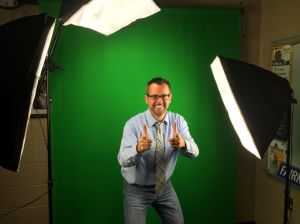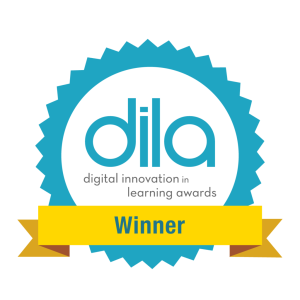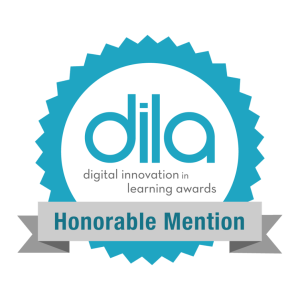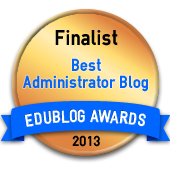Blog Archives
What’s Your One?
Have you ever returned from a conference and been asked to name a “take-away” or something you learned?
I recently had the chance to collaborate on a special podcasting project with Theresa Stager (co-host of the PrincipalPLN podcast). We were both at the NAESP national conference in Maryland and presented a session on podcasting together in the Innovation Lab. Click HERE to view the live NAESP podcast.
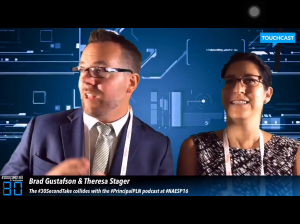
During the session and live-podcast, we asked school leaders their “one” takeaway. In addition to hearing what conference attendees were learning, we also wanted to model just how easy starting a podcast can be. (Clearly, we needed to spend a tad more time setting up the green-screen lights, but getting over the need for perfection is a big step to actually starting a podcast!)
I’ve always maintained that one of the best ways for principals to provide relevant instructional leadership is to model using relevant communication platforms like face-to-face conversation, social media, and podcasting. A podcast is also a great way to shine the light on the incredible work students and staff do on a daily basis, so there are many reasons to start.
We hope you enjoyed hearing from the inspiring (and brave) school leaders as they shared their “one” conference takeaway. We also hope that you consider trying podcasting as a school or classroom communication tool.
I’d love to hear what your “one” was from NAESP16 in the comments section below, as well as other reasons you’ve used podcasting in your classroom or school.
**Be sure to hop over to this blog’s new home at www.BradGustafson.com for more Adjusting Course goodness. In less than seven seconds you can subscribe and have the blog delivered right to your virtual doorstep.
Global Green-Screen Project
CONNECT STUDENTS TO A COLLABORATIVE VIDEO PROJECT #GlobalGSP
Click HERE to View Current Playlist!
Do you remember being a student in elementary school and creating a shared story with your classmates? The idea was simple…a teacher started by writing down a sentence on a sheet of notebook paper.
The teacher would then pass the paper to a student seated near the front of the class, and that student would add a sentence. After that, the story would be passed to the next student who would also add a sentence. The key was to build off each other’s writing to create a cohesive plot. It was wildly creative and tons of fun!
The Global Green-Screen Project is essentially the same thing. Instead of adding a sentence to a story your class is adding a 20-30 second video created in green-screen. This is an opportunity for students to practice creativity, collaboration, digital leadership and more!
OPTION #1: DIRECTIONS
- Sign-up to participate HERE.
- Wait for your turn (each video “chapter” needs to build upon previous videos).
- Watch all of the videos before your chapter to ensure your class connects to the preexisting plot in a logical manner.
- If you notice the person ahead of you missed their deadline on the sign-up sheet you may contact them or skip them to keep the project on schedule.
- Try to conclude your video with a transition or prompt that sets the next class up for success. This will increase cohesion in the final production.
- Once your video is complete download it to YouTube and title it using the format below: “Chapter (insert number) – Global Green-Screen Project”
- Add a YouTube link to your completed video in the shared google doc HERE.
- E-mail the next person on the list when your video is posted so that they may begin production.
- Try to complete your video within 2-4 days of being contacted.
We’ll run this first Global Green-Screen Project for six to eight weeks and see what happens. Please use the hashtag #GlobalGSP on Twitter for sharing.
OPTION #2: FREESTYLIN’
Students can create a short (1 minute or less) green-screen video that goes with the theme, “Let Learning Take You Places.” The goal is to amplify student voice in a creative way, so encourage kids to dream big as they share their learning. Once your video is complete download it to YouTube and title it using the format below:
“Your Name – Global Green-Screen Freestyle”
Note: The “Freestyle” option will be run separately from the collaborative video project. Freestyle videos are not part of the shared story sequence being created across different schools.
COMMON CORE STATE STANDARDS
The Global Green-Screen Project provides students an immersive opportunity to interact with the Common Core State Standards. Please see an example of the Speaking/Listening Standards this project supports below.
Presentation of Knowledge and Ideas:
CCSS.ELA-LITERACY.SL.5.4
Report on a topic or text or present an opinion, sequencing ideas logically and using appropriate facts and relevant, descriptive details to support main ideas or themes; speak clearly at an understandable pace.
CCSS.ELA-LITERACY.SL.5.5
Include multimedia components (e.g., graphics, sound) and visual displays in presentations when appropriate to enhance the development of main ideas or themes.
QUESTIONS?! CONTACT OUR KEY COLLABORATORS:
Flipped Open House
We are extremely excited for our ‘Open House and Community Connections Night’ on September 3rd. This year we are flipping things around a bit! We are sharing some short videos before Open House so that our families have the chance to learn more about our amazing teachers and the curriculum prior to connecting in person.
Directions:
1. Watch the short video promo above. (It’s less than two minutes long.)
2. Go to https://goo.gl/4u7pFV and select the grade-level playlist you’d like to watch. Don’t forget to watch the flipped videos created by Specialists and Administration too.
3. Join us at Open House and Community Connections Night on September 3, 2015. PTA booths open at 3:00pm. Classrooms are open between 4:00 – 6:00pm. Community tables, PTA booths, and Social Media Support will be open in the Cafeteria throughout Open House. We can’t wait to connect!
Additional Resources:
I’m really proud of the extra time our team took to create their curriculum videos. To access each grade-level’s playlist in YouTube click HERE.
To access our ‘Welcome Back’ letter click HERE.
To go to our school’s website with more Open House dates/forms click HERE.
Please let me know if I can help in any way.
3 Questions I Hope my Children’s Teachers are Asking
I often reflect upon how to empower students to learn at a high level while navigating the digitally-connected landscape we find ourselves in. I ask questions and strive to serve our students better today than I did yesterday.
In addition to being a principal I’m also dad to three pretty spectacular kids. My wife and I pray our children grow up to be loving people with humble hearts and curious minds. We also understand that their world is different than ours was, so we think about other important things too. My hope is that my children’s teachers are reflecting on some of the same questions I ask myself.
3 Questions I Hope my Children’s Teachers Are Asking
- How might I model digital leadership for my students?
- How might I help my students express their ideas in powerfully creative and appropriate ways using social media?
- How might I leverage the transformative power of technology to fuel collaborative conversations between students about their learning?
For the past couple years I’ve collaborated with Tony Sinanis and John Fritzky (principals in New York and New Jersey) to create cross-state collaborative podcasts. The podcasts feature our students sharing their favorite books, vision for education, and other creative endeavors led by kids.
This year we are adding an interactive Twitter-based chat to the collaboration. We’d like to invite you to join us as we strive to model how to leverage technology as a tool to connect, inspire, and amplify student voice.
The four chat dates for the 2015-2016 school year are below, and we’re planning to share out a student-created podcast prior to each chat. Please join us and include your classroom or school in the conversation. We’ll be using the hashtag #StuConnect on Twitter starting at 9:30am CST on the dates below.
#StuConnect Chat Dates
October 8, 2015
December 1, 2015
January 15, 2016
March 10, 2016
Story Savvy
What is it about storytelling that is so captivating? I’ve always been impressed by the relative ease in which a master storyteller is able to connect with others. I’ve also noticed that a good story always evokes a response. If I’m being completely honest, there are times I’m envious of a great storyteller’s ability to deliver a message to a completely engaged audience. I occasionally catch myself thinking, “If only I could deliver a story like she can…I’d probably do more public speaking if I had that kind of charisma.”
Kids don’t require master storytellers…they just need somebody savvy enough to pen a few lines or to speak on their behalf. I’ve come to embrace the notion that our students are counting on us to tell their stories. They are also counting on us to muddle through our own vulnerabilities to champion an important narrative. Students need us to be “story savvy.”
Being savvy simply means that we understand or get the sense of something (Dictionary.com, 2014). It’s similar to a person that’s tech savvy. An individual that’s regarded as tech savvy understands the problem-solving required to learn new technologies. An educator that is story savvy understands the value of sharing students’ stories, and effectively communicates them in many ways…including conversation, social media, and other Web 2.0 tools.
Here are five steps to help you be a “Story Savvy” educator:
S – omebody Else
Believe it or not, somebody else is probably already telling your school’s story! It’s true…so you may as well share your authentic observations and professional reflections. After all, who would you rather share important information about your students and school? It’s important that our communities hear from us. While you’re at it…share your school’s story with passion and transparency. We are in classrooms on a daily basis and see the amazing work our students are doing firsthand; we have a reason to be excited! Be sure to keep the stories you share positive and altruistic and let somebody else share those other kind.
A – cknowledge
Acknowledge the heroic efforts of staff and parent volunteers. Sharing encouragement and affirming the teamwork it takes to make a school great is an important narrative. We cannot do it alone, so why not give thanks to the people that make it all happen. An attitude of gratitude is contagious…pass it on! Acknowledge the difference our teachers are making in your stories.
V – oice
Student voice matters. Be sure that your stories empower kids to develop their capacity to communicate, create, collaborate, and think critically. Better yet…foster students’ leadership potential by passing them the microphone and providing an authentic audience. Their voice is typically more impactful and interesting than ours anyways…let them speak and be sure to listen!
V – ision
Vision doesn’t talk but people do! How many times have you been on the sidelines of a soccer game and overhear parents discussing your school’s vision? (Insert cricket sound effect here.)
There is a better way to communicate your school’s vision with remarkable clarity and that’s through stories! Highlight activities that exemplify your vision for a 21st century student learning experience. Even better…let your students share the work they are doing that aligns with steps towards vision. Your vision comes to life through the pictures of smiling students and emotions associated with their successes.
Our school community and tax payers have made a tremendous investment in our schools and we can be accountable through the results being achieved. Share those stories! Your stories can serve as a pathway to a better future and vision attainment.
Y – our Words
If a tree falls down in a forest does it make a sound? If a principal types a newsletter that nobody reads is it a compelling story? Your words matter, so why not share them in a relevant format? Leverage social media, video podcasting, and innovative new mediums to connect your words to those you serve in a manner that they prefer. People will tend to fill in the blanks if your words are absent. Communicate with constituents so they are informed and able to support the important work being done for our students.
